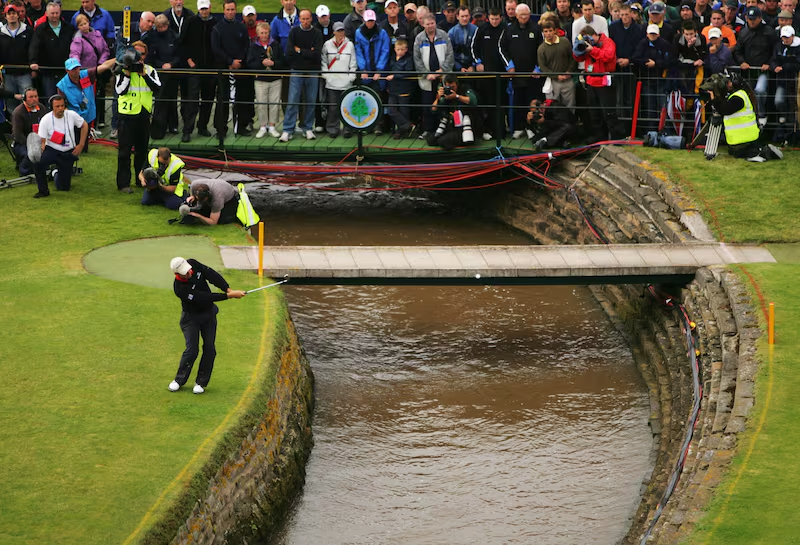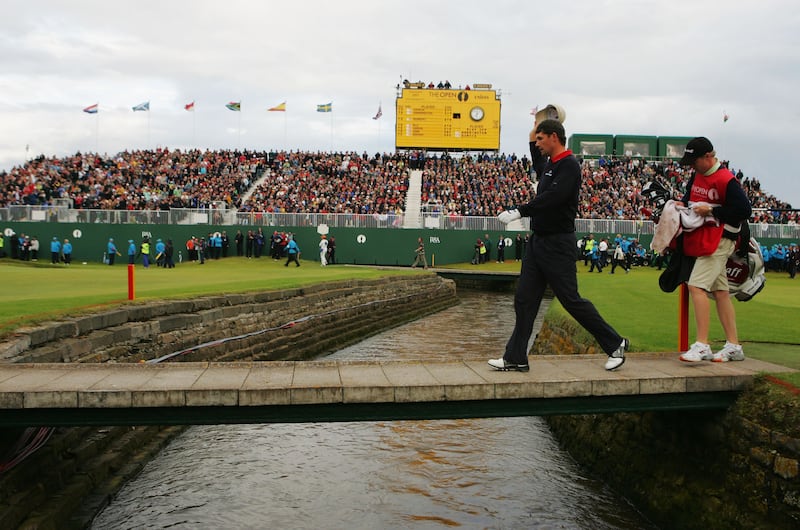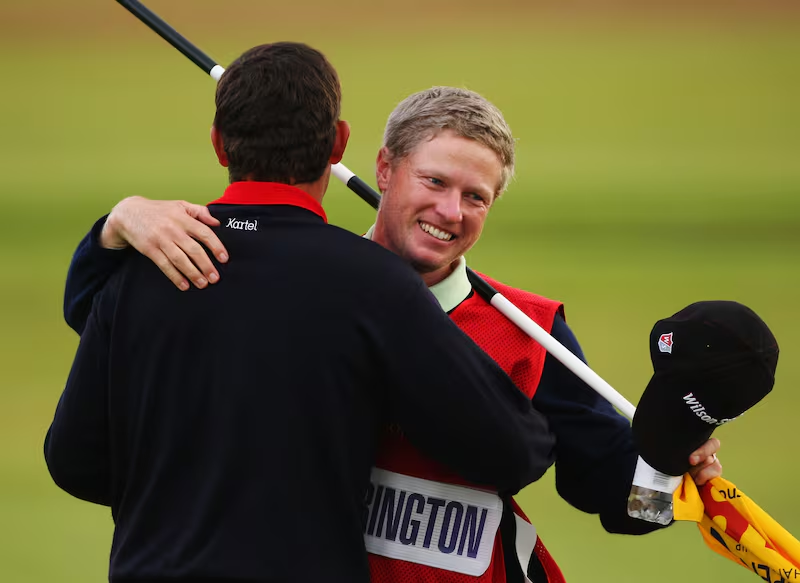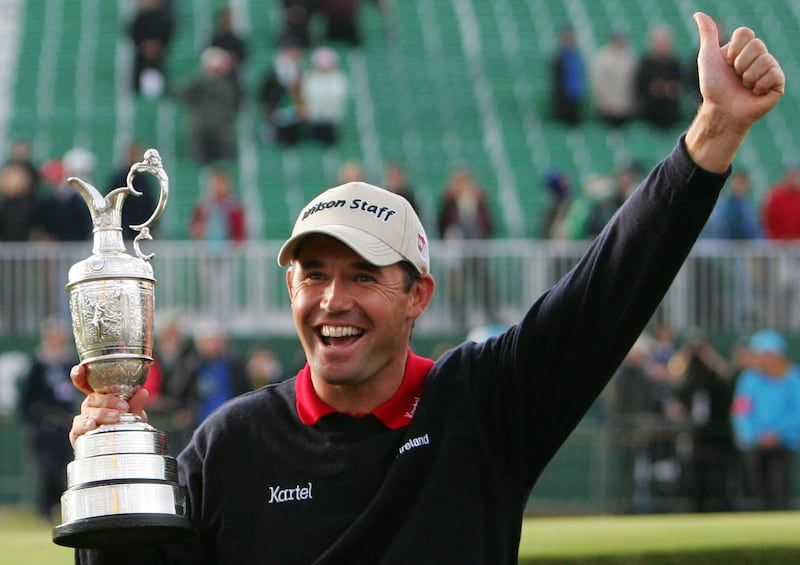In the digital age, part of the human memory has been subcontracted to YouTube. Maybe you had to click on something about cookies, but otherwise the deal was done behind your back.
So, everything you have forgotten about the final round of the 2007 Open at Carnoustie is neatly packaged in 5 hours, 46 minutes and 12 seconds of verbatim coverage, daring you to remember.
If you wish you can scroll to the hairy part where Pádraig Harrington is standing on the 18th tee, attempting to become the first Irishman to win a Major in 60 years, holding a one-shot lead that is about explode in his hands.
In sport a date with destiny is one of the most quoted appointments, but it refuses to be nailed down in a diary, and the chances are you will die waiting. Anyway, destiny had offered him this small window in its schedule. Take it or leave it.
READ MORE
“Well, this is what it’s all about: bunkers left, bunkers right, the [Barry] burn,” said Maureen Madill in the BBC coverage, like she was describing an obstacle course from Gladiators.
The 18th at Carnoustie is a beast. Harrington made a hard pass at the ball with his driver and because the tee-shot is semi-blind he stood for a second, his blank face punctuated by wide eyes, listening for comfort from the gallery. None came.
“Pushed it,” said Sam Torrance in commentary. “There’s bunkers down there.”
“And water,” said Peter Alliss.
Harrington’s ball reached a footbridge and pin-balled into the Barry Burn.

In a ceremony at Pinehurst later today Harrington will be inducted into golf’s Hall of Fame, only the third Irishman to receive the honour after Joe Carr and Christy O’Connor Snr. In a professional career that has spanned 30 seasons and more than 850 tournaments, Harrington made himself into something that nobody thought was possible in the beginning.
The 18th at Carnoustie, though, was the point where everything was thrashed out. It was such a shambles and such a triumph and such a bloody conflict between mind and body that it was an epic sports story expressed in a double bogey. There was another path that didn’t lead to the Hall of Fame. He was invited to take it.
Story-telling in sport is full of contrivance. For narrative expedience events are injected with significance. Most of the time it is a cheap artifice; sometimes it is plain bogus. Just once in a while it is true. In the 17 minutes and 44 seconds it took to play the hole Harrington was exposed; his weakness, his strength, his heart, his mind, his nerve: most of all, his conviction. Here was an act of self-determination.

Everything has a context. Up to that point in his professional career Harrington had clocked up 30 second-place finishes. All of them were different, and not all of them were winning chances, but over time they were lumped together, compiled by the prosecution as a book of evidence.
“I spent years trying to clarify all those second places,” he said, “but I was fighting a losing battle.”
If he had lost at Carnoustie, how would he have explained it? What would people have said? That he had choked.
Harrington took his penalty drop; the lie was unkind. With a five iron he made heavy contact and found the stream again, closer to the green, nearer to oblivion. In commentary Allis mentioned Jean van de Velde, the Frenchman who had imploded on the final hole at the 1999 Open and blown a commanding lead. Torrance trotted out the dreaded numbers.

“He has to get up and down to beat van de Velde’s seven,” said Torrance. “What a shame Pádraig.”
His head was spinning.
“After the second bad shot on the 18th I was devastated,” he said. “I had the feeling of being embarrassed. The feeling of embarrassment is worse than failure and it was starting to overwhelm me.”
Harrington always had trust in his mind. He said once that he “understood” his mental game better than other people understood theirs, “and I have felt that since I was 18 years of age”. That didn’t mean he allowed his mind to rest. For the previous couple of years he had been working with Bob Rotella, the most successful sports psychologist in golf, and that week at Carnoustie Rotella stayed at Harrington’s house.
His caddy Ronan Flood had attended many of their sessions and as they staggered up the 18th that gave him some tools to go to work. He was Rotella’s proxy. The walk between his third shot and his second penalty drop afforded Flood some time to gather the litter in Harrington’s mind and dump it.
“It was all one-way talk going down that fairway,” Harrington said.
But whatever groundwork Rotella had done or whatever emergency repairs Flood had performed, Harrington needed to find a clearing in his mind to play the most important shot of his life. Behind the clouds was staggering clarity. The clouds parted.

He spotted a small patch of ground where the mower blades had been lifted and the grass was just a little fluffy. He paced out the distance and the numbers were perfect for the shot he had in mind: 49 yards to the pin, which meant carrying the ball 35 yards to the flat part of the green and trusting the spin. With a lob wedge in his hand, and his feet close together, he chose the shot that gave him the greatest control and demanded the most of his nerve.
“The laughable thing about that shot is that when I hit it, and it was in the air, it was like I was a kid again,” he said. “When I was a schoolboy, I used to show off to my friends by hitting a pitch really hard and making them think I’d made a mess of it but making it stop dead then beside the hole. It was completely the shot I’d hit if I wanted to show off.”
He still needed to hole the putt, he still needed Garcia to bogey the 18th, he still needed to win a four-hole play-off, but in that 49-yard chip he had crossed a bridge in his life as a golfer.
On that path was the Hall of Fame.

















